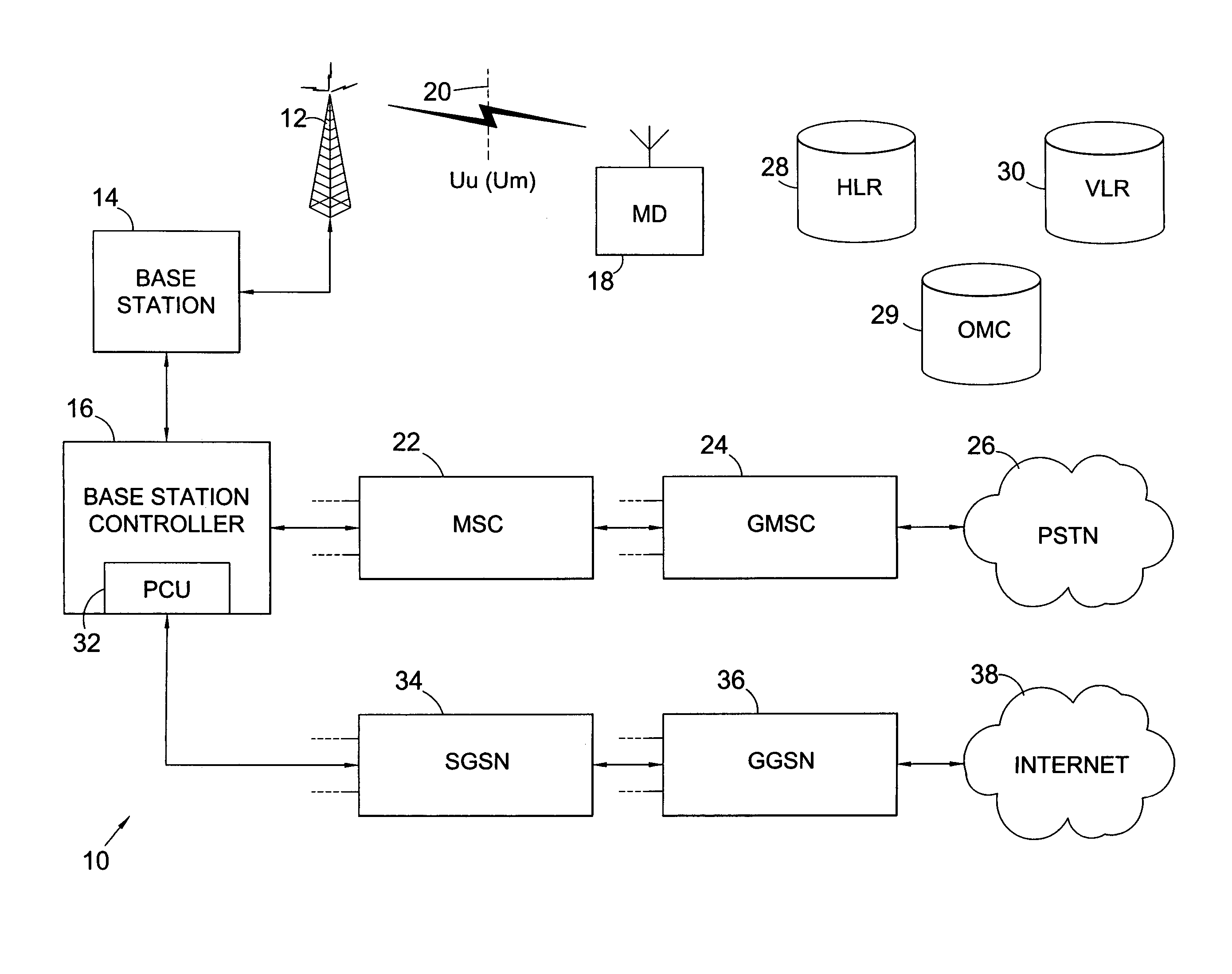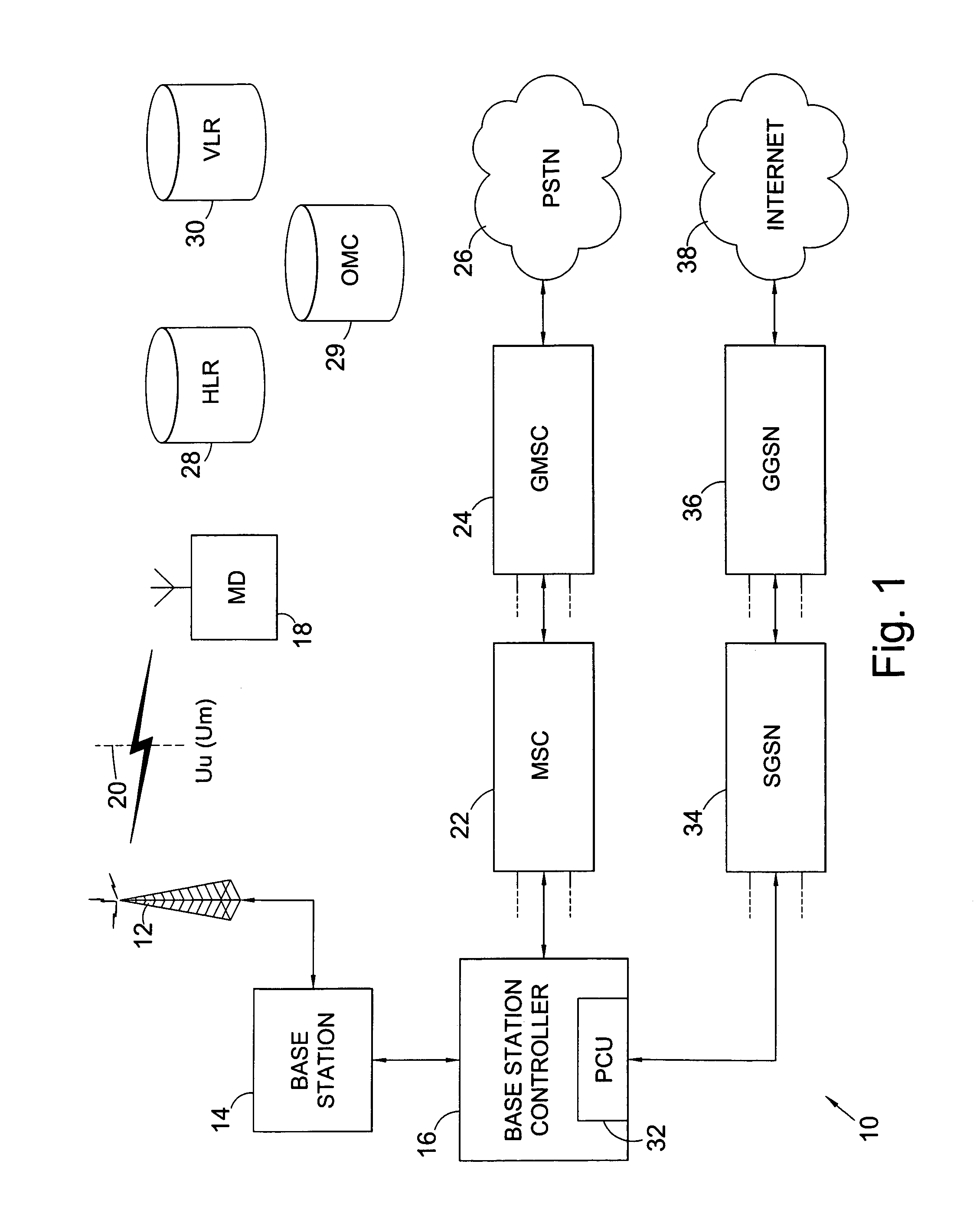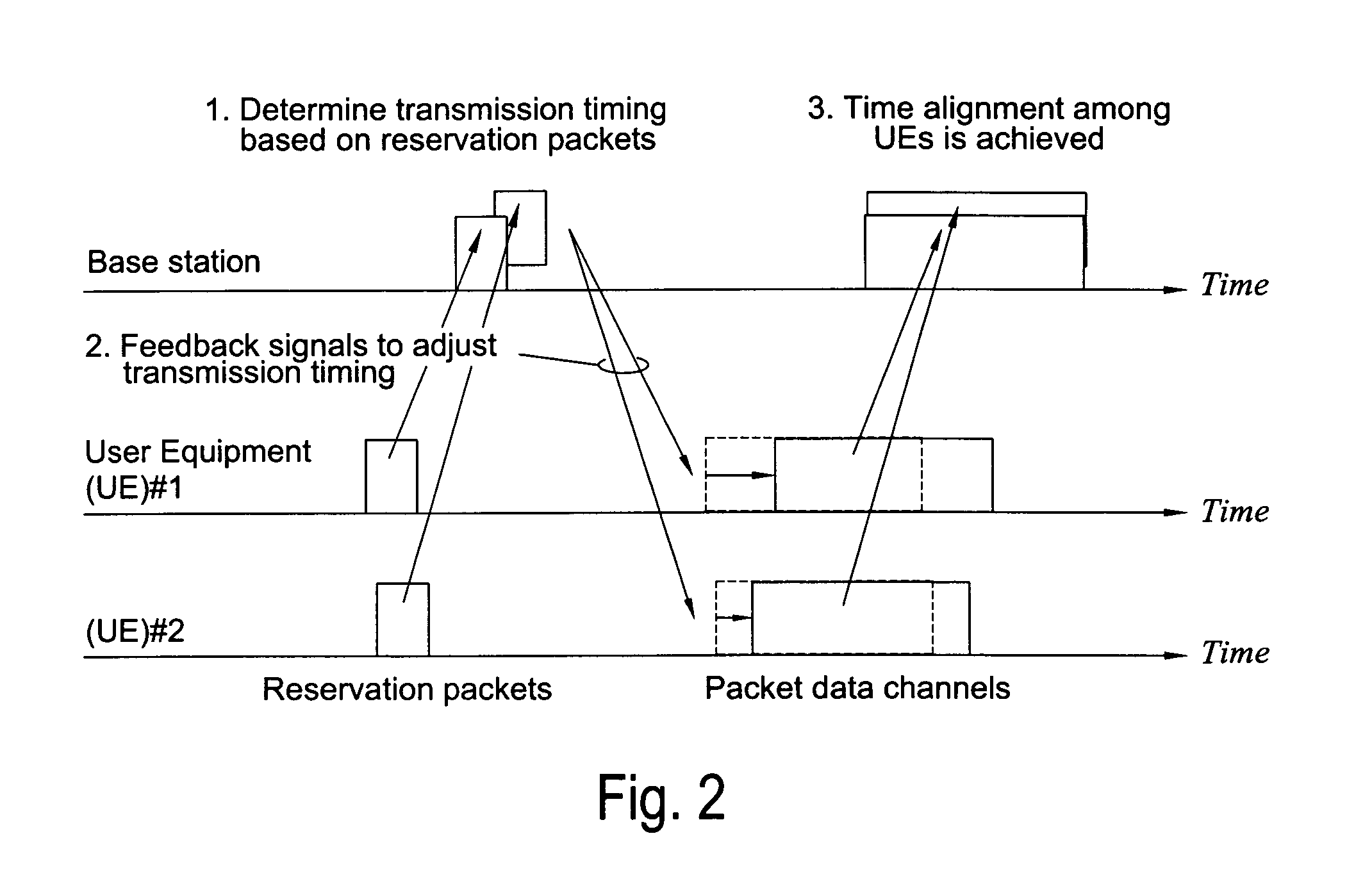Uplink interference cancellation
a technology of uplink interference and cancellation, applied in the field of wireless communication, can solve the problems of intracell interference, multiple access interference rise, cdma system is limited uplink, etc., and achieve the effect of improving the performance of a cdma based wireless network
- Summary
- Abstract
- Description
- Claims
- Application Information
AI Technical Summary
Benefits of technology
Problems solved by technology
Method used
Image
Examples
Embodiment Construction
[0064]As discussed above, in a cellular configuration using CDMA as a multiple access scheme, users exist in the same frequency spectrum at the same time, and are delineated by a unique spreading code. Consequently, the capacity of CDMA systems is said to be self-interference limited, which is to say that performance (both capacity and quality-of-service) is determined by the interference power arising from users within the same cell or in adjacent cells.
[0065]The use of orthogonal variable spreading factor (OVSF) codes in an ideal environment with synchronised users and single path channel profile between transmitter and receiver ensures that the different transmitted streams are orthogonal to each other as illustrated in FIG. 3. However with asynchronous reception from multiple users, the non-zero cross-correlation between different users gives rise to interference due to the loss of orthogonality.
[0066]FIGS. 4, 5 and 6 show cross-correlation plots of OVSF codes of length 8. The f...
PUM
 Login to View More
Login to View More Abstract
Description
Claims
Application Information
 Login to View More
Login to View More - R&D
- Intellectual Property
- Life Sciences
- Materials
- Tech Scout
- Unparalleled Data Quality
- Higher Quality Content
- 60% Fewer Hallucinations
Browse by: Latest US Patents, China's latest patents, Technical Efficacy Thesaurus, Application Domain, Technology Topic, Popular Technical Reports.
© 2025 PatSnap. All rights reserved.Legal|Privacy policy|Modern Slavery Act Transparency Statement|Sitemap|About US| Contact US: help@patsnap.com



